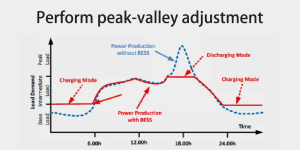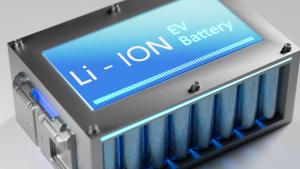What cause the lithium ion battery swelling?
Introduction
Lithium batteries are commonly used, whether in garage door openers, laptops, or electric tools. But have you ever seen a swollen lithium battery? It can be a confusing sight, so what happened inside the lithium polymer battery, which caused it to swell? This article will provide you with more details so that you can learn more about what causes lithium ion battery swelling, how to prevent it, and how to deal with swollen batteries.

What Cause Lithium Battery Swelling?
Battery swelling is a failure mode associated with a type of battery cell technology called lithium-ion Polymer. Lithium-ion polymer batteries have become very popular across the whole industry in recent years because of their slim and customization shape and longer battery life. Lithium-ion polymer batteries are packaged in a flexible multi-layer bag, which sometimes swells due to various reasons, including but not limited to age, usage, and environmental conditions. Here, we will provide two main reasons for lithium battery swelling.
The thickness of the electrode plate has changed
The first reason that the change in the thickness of the electrode plate. When using a lithium-ion battery, the thickness of the electrode plates, especially the graphite negative electrodes, will change to some extent. Lithium-ion batteries are easy to expand after being stored and circulated at high temperatures, with a thickness growth rate of about 6% to 20%. Among them, the expansion rate of the positive electrode is only 4%, and the expansion rate of the negative electrode exceeds 20%. The fundamental reason for the increase in the thickness of the electrode plate is the nature of graphite. The nature of graphite is the fundamental reason for the increase in the thickness of the lithium polymer battery pole piece. It is the irreversible expansion after lithium intercalation that causes the graphite anode to expand. The particle size, the adhesive, and the pole piece structure are the main reasons for this part of the expansion. The expansion of the negative electrode causes deformation of the core. Further, it leads to the following situations: a cavity between the electrode and the separator, micro-cracks in the negative electrode particles, the rupture, and recombination of the SEI film, the perfection of electrolytes, and deterioration of the cycle performance. Sometimes, a lithium car battery can also play an important role.
-.jpg)
Gas generated in the lithium-ion battery
The gas generated in the battery is another important reason for the battery expansion. Depending on whether the lithium polymer battery is cycled at normal temperature, cycled at high temperature, or put aside at high temperature, it will produce expansion and gas production in different degrees. A small amount of gas is generated during the pre–formation process after a lithium-ion battery is assembled. These gases are inevitable, and they are also the source of irreversible capacity loss. When a battery is used, due to impurities in the electrolyte or excessive moisture in the battery, the amount of internal gas generated gradually increases. These impurities in the electrolytes need to be removed carefully. Inadequate humidity control may be caused by the electrolyte itself, incorrect battery packaging, humidity, or damage to the corners. Any overcharge and over-discharge, abuse, and internal short circuit will also accelerate the gas generation rate of the battery, and lead to battery failure. Sometimes, the lithium battery price is also a very important factor.

How to Prevent Lithium Battery Swelling?
There is a certain risk when the battery expands. Once the battery expands, it is best to stop using it to avoid causing other injuries. Therefore, when we buy a lithium-ion battery, we must start to prevent the expansion of the battery and take some protective measures.
Avoid excessive charge and discharge.
Before the voltage reaches the lowest cut-off voltage (3.6 v per battery), please stop using the battery. The previous experiments on overcharge caused the batteries to expand seriously, although the batteries did not explode. Overcharge and discharge will cause great damage to the battery, which may lead to the destruction of the electrode’s active material and loss of responsiveness.
Use and preserve battery at room temperature.
Store equipment in a cool and dry environment. Do not charge the equipment near direct sunlight or a heat source, and do not store them in a hot garage or cold environment.
Use high-quality chargers
Sometimes, the original charger is lost or damaged, and a new charger needs to be found. Choosing the cheap one might seem economical, but it may not have the same power output and could damage the battery or equipment, making it a bad choice.
Don't leave your device plugged in.
Lithium-ion batteries are used for discharging and charging cycles, so plugging in the power supply all the time can not give full play to their capabilities.

What Should I Do With Swollen Lithium-Ion Batteries?
Here are some tips for you to deal with your swollen lithium-ion battery
l Don’t ignore it. It won’t get better or safer. Even if your device can still work, you must replace the battery immediately. It can be dangerous to use this equipment or keep it connected to the power supply.
l, Do not attempt to puncture a battery to release the gases. The accumulation of gases will make the expanded lithium-ion battery fragile because its outer shell is under pressure. If something goes wrong, you may encounter fire and chemical burns.
l If possible, take out the battery carefully. If it can not be disassembled, or if you feel resistance when trying to disassemble it, please stop and hand it over to authorized maintenance personnel. If you can take it out and put it in a safe and cool container.
l, Take your battery to an authorized battery handling institution, a computer, or a telephone repair shop. These places provide correct recycling processes to ensure safe recycling or disposal.
.jpg)
Conclusion
Lithium ion battery swelling because of the internal chemical reaction. Factors that can lead to this situation include extreme temperatures, poor or damaged battery, or charging problems. Remember, all batteries will need to be replaced eventually, but please handle the batteries very carefully according to the manufacturer’s plan to ensure that your battery will not swell and reach the endpoint.











